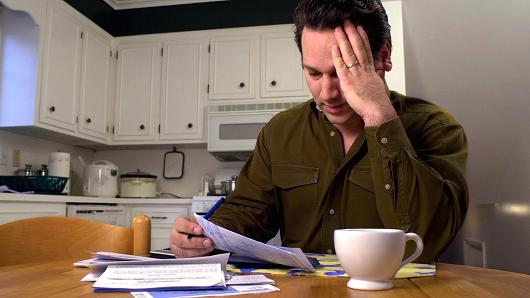Asking everyday Americans to navigate health insurance is like asking passengers to fly the plane. Without proper education and access to information, it's nearly impossible to avoid turbulence along the way.
Because I work in health care, I was not surprised to learn the extent to which insured Americans are encountering medical debt.
An alarming 60 percent of people who file for bankruptcy do so because of medical bills, a Harvard study found, with millions of Americans not knowing that tangible health care savings can be achieved with transparency and incentive programs.
"Most Americans fly blind when they receive care — and no one is stepping up to help them do better."
No wonder. In less than six years, the number of people covered under high deductible health plans grew from 8 percent to over 24 percent. And currently 46 percent of Americans have deductibles over $1,000.
A new era of benefit design has been ushered in, yet, despite quick, drastic change, the reeducation of the health care consumer isn't keeping pace. People neither know how to choose between plans or manage their benefits.
Numerous studies have shown that while engaged patients have lower costs and better health outcomes, very few are seen as 'engaged.' Only a minority of consumers know basic quality information about their doctor, such as which medical school s/he attended. Obtaining cost information is also an area of struggle for most consumers.
Our 2014 survey on the subject revealed that only one-third of respondents say they negotiate bills with a doctor or hospital. Similarly, only one in three know the cost of a medical service or procedure before receiving care. Women (39 percent) were more likely than men (29 percent) to know the upfront cost of a procedure or doctor visit.
The New York Times/Kaiser Family Foundation poll points out more than two-thirds of patients stuck with an out-of-network bill said they didn't know the provider wasn't covered; and another 2014 study from the American Institutes for Research shows a similar finding - almost half (42 percent) were not at all or only somewhat likely to check what their plan would and wouldn't cover before getting health services.
Think about that.
Most Americans fly blind when they receive care — and no one is stepping up to help them do better.
Contrast that to the way grade-school math classes ready students to manage their personal finances by teaching them to balance checkbooks and compute simple and compound interest (savings and debt). While we might not need a school-based program to help people manage their greatest financial risk — their health — we do need to recognize that a one-hour open enrollment tutorial will never create informed patients.
We need to better educate Americans on the information they should be seeking when it comes to their health care, provide better tools for them to shop and guide them through the process. We all must play a role in teaching.
Providers can make it a priority to direct patients to tools where they can compare prices and in-network options. Health plans can invest in call centers that can actively reach patients who are not shopping for care, and of course, entrepreneurs can take complicated tasks and make them user friendly. (By the way, that's exactly what Turbo Tax did for our personal finances.)
Nobody can expect to be an expert the first time they do something. But with a better orchestrated support system, we can help patients navigate the system and drive to best-case outcomes for both their health and their wallet.
Commentary by Mitch Rothschild, executive chairman and founder of Vitals, an online search tool that helps consumers find the best healthcare. Follow him on Twitter @MitchRoths.
For more insight from CNBC contributors, follow @CNBCopinion onTwitter.





